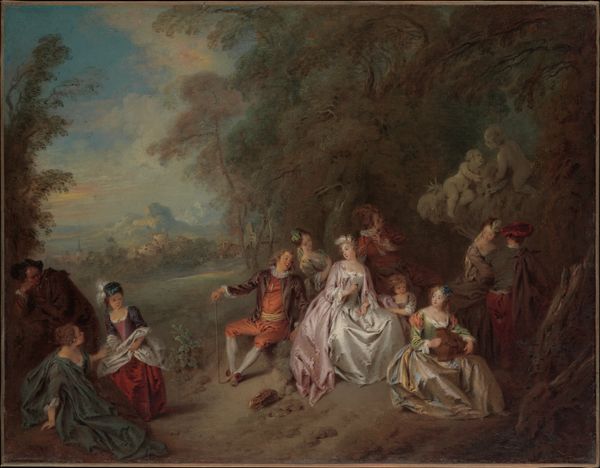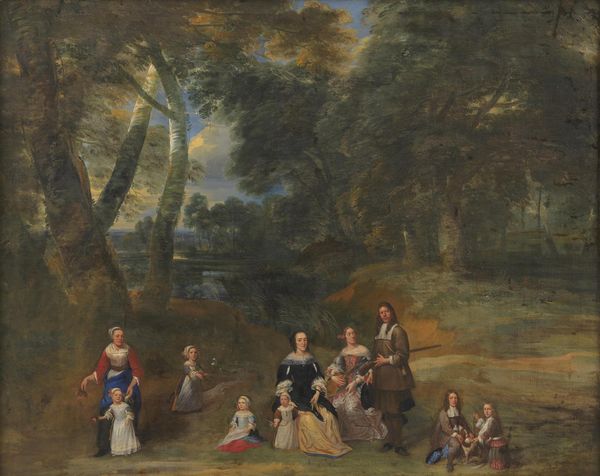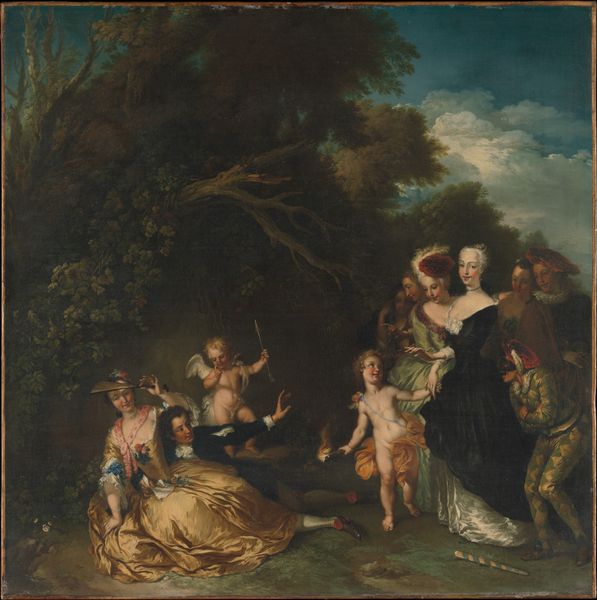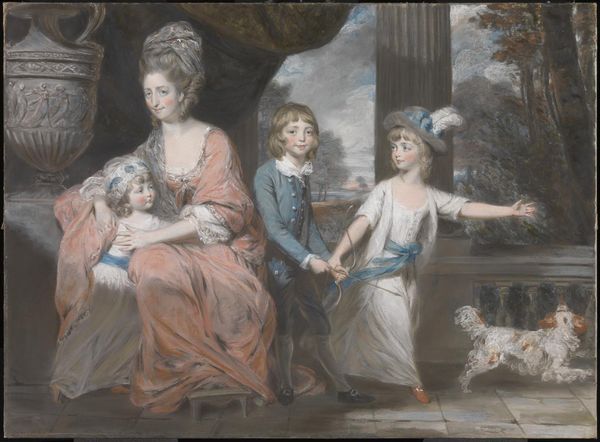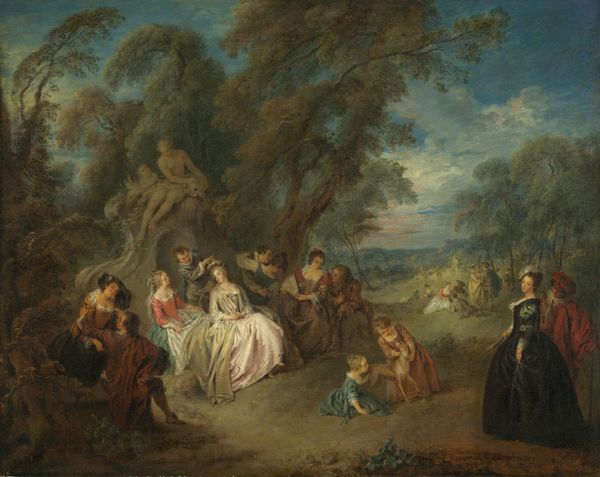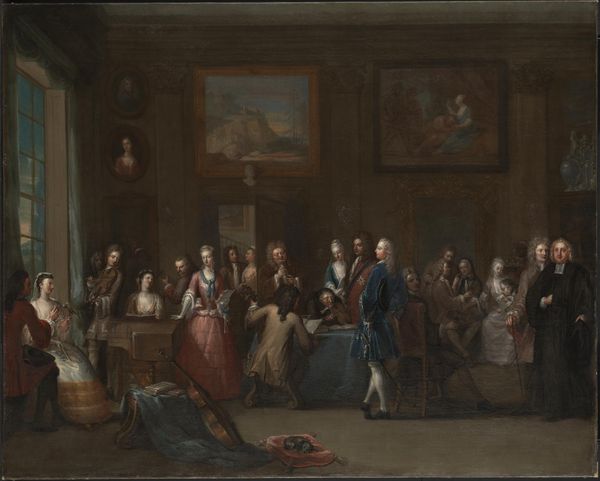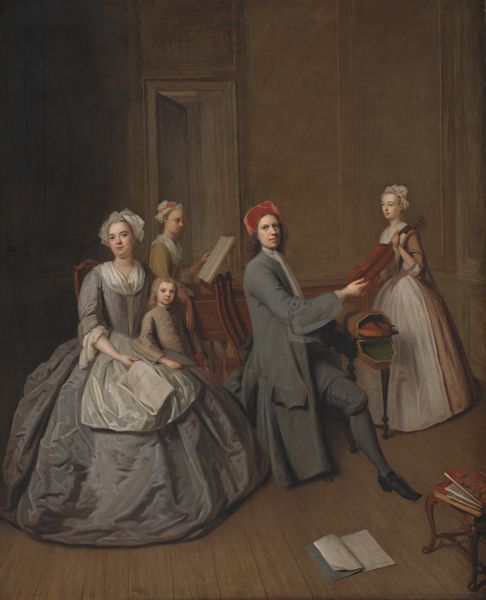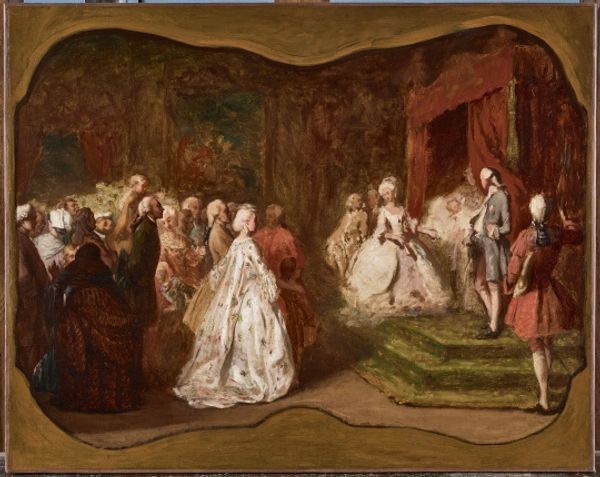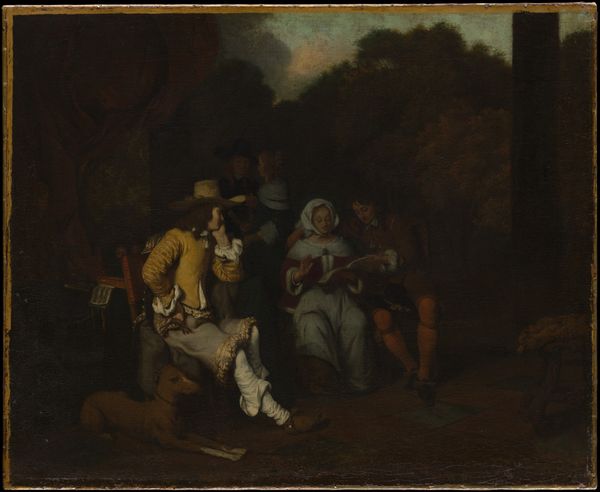
Uvedale Tomkyns Price (1685–1764) and Members of His Family 1730 - 1733
0:00
0:00
oil-paint
#
portrait
#
baroque
#
oil-paint
#
oil painting
#
group-portraits
#
men
#
genre-painting
#
portrait art
Dimensions: 40 1/4 x 62 1/2 in. (102.2 x 158.8 cm)
Copyright: Public Domain
Curator: Welcome. Here we have Bartholomew Dandridge's group portrait, "Uvedale Tomkyns Price (1685–1764) and Members of His Family," executed in oil paint between 1730 and 1733. Editor: Immediately, I'm struck by the muted palette and the somewhat artificial tableau. It feels…stagey. What's your take on its compositional elements? Curator: Indeed. Note how Dandridge arranges the figures. The composition isn't quite symmetrical, but balanced, anchored by Uvedale Price at the painting's center. The faces direct our view in several directions at once, disrupting clear lines and hierarchies of focus. Editor: Look at the fabrics! The heavy silks, particularly the dark gown on the right, tell of the Price family's wealth. Think of the labor involved in creating and maintaining these garments—the spinners, weavers, tailors, and servants involved. I also notice enslaved children within this painting, drawing a picture of who benefitted from labor here. Curator: Yes, consider how the brushstrokes vary in their rendering. Note the faces. Dandridge employed careful shading and detail, while the textures of those fabrics show far less rendering than one would expect. Perhaps an indication of the artist’s choices but maybe due to labor constrictions or budget? Editor: Precisely! And let's not forget the implications of commissioning such a large-scale portrait. What message are they trying to broadcast here? I notice a few servants near to this landed gentry who would depend heavily on this type of commissioned representation for social purposes. Curator: It's also worth considering the artistic conventions of the time. Dandridge was clearly working within the established tradition of Baroque portraiture, but with his own, unique interpretations on color relations. He manages an interesting dialogue here between form and emotion. Editor: Ultimately, this work provides us with rich information. By considering the material and labor involved, we can interpret social narratives behind commissioned representations of 18th-century life in Great Britain. Curator: Agreed. Dandridge's painting reveals the complex artistry inherent in a carefully arranged family portrait and, at the same time, is another lens through which we can unpack histories and legacies surrounding material inequality.
Comments
No comments
Be the first to comment and join the conversation on the ultimate creative platform.
